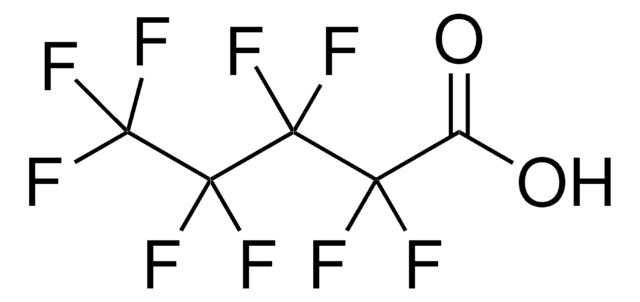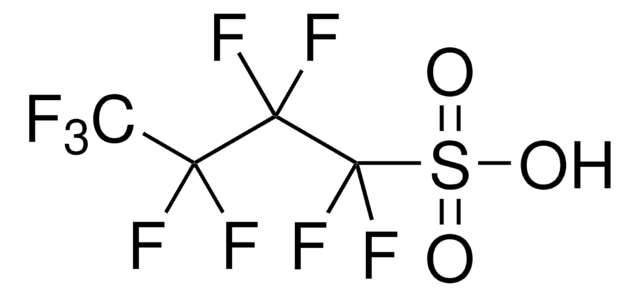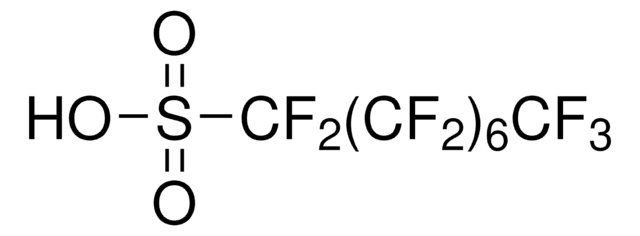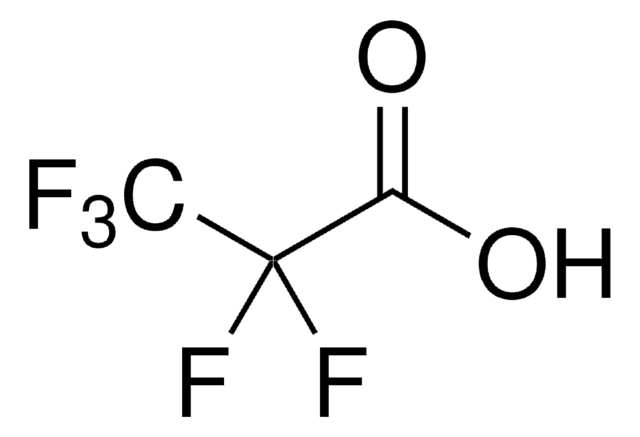342041
Perfluoroheptanoic acid
≥97.0%
Synonyme(s) :
Tridecafluoroheptanoic acid, Perfluoroheptanoic acid
About This Item
Produits recommandés
Niveau de qualité
Pureté
≥97.0%
Forme
solid
Indice de réfraction
n20/D 1.306 (lit.)
Point d'ébullition
175 °C/742 mmHg (lit.)
Pf
30 °C (lit.)
Densité
1.792 g/mL at 25 °C (lit.)
Chaîne SMILES
OC(=O)C(F)(F)C(F)(F)C(F)(F)C(F)(F)C(F)(F)C(F)(F)F
InChI
1S/C7HF13O2/c8-2(9,1(21)22)3(10,11)4(12,13)5(14,15)6(16,17)7(18,19)20/h(H,21,22)
Clé InChI
ZWBAMYVPMDSJGQ-UHFFFAOYSA-N
Vous recherchez des produits similaires ? Visite Guide de comparaison des produits
Application
- For the fluoroalkylation of C-H bonds of aromatic compounds using Ni/SiO2 nanocatalyst.
- To synthesize biphenylyl benzoates via Mitsunobu reaction.
- To synthesize N-perfluoracyl β-thioamides from β-thio amines in the presence of methyl chloroformate.
Mention d'avertissement
Danger
Mentions de danger
Conseils de prudence
Classification des risques
Repr. 1B - STOT RE 1
Organes cibles
Liver
Code de la classe de stockage
6.1C - Combustible acute toxic Cat.3 / toxic compounds or compounds which causing chronic effects
Classe de danger pour l'eau (WGK)
WGK 3
Point d'éclair (°F)
Not applicable
Point d'éclair (°C)
Not applicable
Équipement de protection individuelle
Eyeshields, Faceshields, Gloves, type P3 (EN 143) respirator cartridges
Faites votre choix parmi les versions les plus récentes :
Déjà en possession de ce produit ?
Retrouvez la documentation relative aux produits que vous avez récemment achetés dans la Bibliothèque de documents.
Les clients ont également consulté
Notre équipe de scientifiques dispose d'une expérience dans tous les secteurs de la recherche, notamment en sciences de la vie, science des matériaux, synthèse chimique, chromatographie, analyse et dans de nombreux autres domaines..
Contacter notre Service technique










